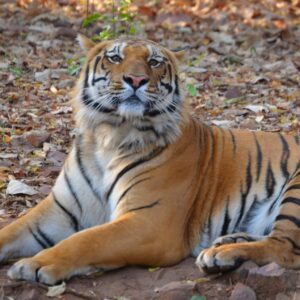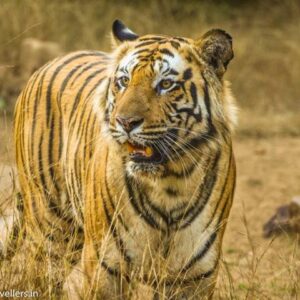Day 1 – Guwahati-Shillong, Meghalaya
Arrive Guwahati airport
Received at Guwahati airport and later drive to Shillong (130km/ 03 ½ hrs). On arrival check in the hotel for 02 nights.
GUWAHATI – Situated on the southern bank of the River Brahmaputra in the Kamrup District of Assam, Guwahati is a fast growing premier city. It is the gate way to the North Eastern States of India and a principal center of socio cultural, political, industrial and trade and commerce of the entire region. Dispur, the capital of Assam is a part of Guwahati. In earlier years, this city was full of areca nut trees rappled by pan creepers. Hence this city subsequently got the name Guwahati. The word ‘Guwa’ in Assamese means areca nut and Hat means market.
SHILLONG – Shillong is the capital city of the state as well as the district headquarter of East Khasi Hills District. The name Shillong is derived from U-Shyllong, a powerful deity, and is situated at an altitude of 1,491m above sea level. This beautiful city is 103kms from Guwahati, the nearest air and train link. The presence of many well reputed educational institutions, many of them by missionary groups make Shillong the hub of education for the entire north-east.
Day 2 – Shillong, Meghalaya
Today we visit Elephant falls, Shillong Peak, DBCIC Museum, Ward’s Lake, local market and archery competition. Overnight at the hotel.
Shillong Peak: The 1960 metres high, Shillong Peak, 10 Km from the city is another fantastic tourist spot. The peak has a very important legend attached to it- it is believed to be the abode of a powerful deity known as ‘U Lei Shyllong’ meaning Shyllong God. It is said that ‘U Lei Shyllong’ was responsible for the creation and the origin of the Khyrim and Mylliem Syiemship.One can get a magnificent view of the spreading township below from the peak on a clear day.
Elephant Falls: 12 kms away, on the outskirts of the city, this mountain stream descends through two successive falls set in dells of fern-covered rocks. At a short distance beyond the falls, there are two smaller falls which are none the less beautiful and captivating. These are the Wei Iaplam Falls and the Wir Phang Falls. A well paved footpath and a small wooden bridge facilitate access to these falls.
The Ward’s Lake: is an important tourist site of Shillong. It is a horseshoe-shaped artificial lake close to the Raj Bhavan (Governor’s Residence) . The lake abounds in fish (grass carps) and feeding the fish from the bridge, which is the land mark of the lake, is a favorite pastime of the tourists. It is believed that a Khasi prisoner, who requested for some kind of work to get him out of his cell, initiated its construction. The lake has a charming winding walk-a-way in the midst of rolling flowerbeds and fairyland lighting with gradually undulating grounds, hemmed in by lush greens. Boats are also available, and the cafeteria provides refreshments.
Don Bosco Centre for Indigenous Cultures (DBCIC): is a three-in-one Institution combining a museum with a research and publication centre, for promoting and preserving the rich cultural heritage of North East India -a unique fusion of all the sister states under one roof. DBCIC contains seventeen galleries displaying cultural artefacts and paintings. It offers study and research facilities throughout its specialised library of 10,000 volumes, a media hall and a conference hall. It is frequented by school students and older research students and anthropologists. DBCIC Museum : The Museum has the following holidays – All Sundays, January 1, January 26, January 31, August 15, November 2, Second last Monday in November, December 22-25 (both days inclusive), December 31, Thursday before Easter to Easter Monday (both days inclusive).
Archery Competitions: Archery in Shillong is an age-old tribal skill in a new guise – the archery contest takes place every day (except Sunday) in Polo Grounds, about 3 km from the city center. It is quite a commercialized activity, with betting booths lining one side of the field. The atmosphere at the contest is very charged, much like a horseracing meet, with bookies and gamblers exchanging money, groups discussing the odds, and contestants gingerly fingering the tips of their arrows. The bows (straight not cross) and arrows are all handmade and local.
Day 3 – Shillong-Kaziranga, Assam
Post breakfast we drive to Kaziranga National Park (290 kms / 07 hrs). On arrival check in at hotel for 02 nights.
KAZIRANGA NATIONAL PARK – Kaziranga National Park – is a World Heritage Site, where more than 75% of the world’s total population of the great Indian One Horned Rhinoceros can be found. It lies on the southern bank of the Brahmaputra River and is one of the oldest parks of Assam. Besides rhinos, the Asiatic Water Buffalo, Elephants, Royal Bengal Tigers, Swamp deer, Barking deer and Hog deer can be seen. About 400 species of birds are found in Kaziranga National Park. To name a few- Swamp Francolin, Great Hornbill, Pallas Fish Eagle, Pied Falconets, Greater Adjutant Stork, Long Billed Vulture. There is no telling what one might find in Kaziranga but it is always a great experience. The specialty here is the Blue naped pitta among a host of Raptors and Waterfowl. The adjoining buffer areas are worth a try too, as numerous rare sightings are reported regularly.
Note: The Park remains open from 1st Oct to mid May. During October like previous year, we are hopeful that this coming October also the Forest Dept. will be able to keep the National Park open for Safari’s. However, this can only be confirmed nearer to date, which Forest Dept. will declare keeping the weather and other factors in mind. Alternatively 01 Nov to 30 Apr is confirmed date for opening of park.
Day 4 – Kaziranga
Post breakfast we go for a Jeep safari inside the park. Later in the afternoon go for another jeep safari . Overnight at the hotel
JEEP SAFARI–
Forenoon: Entry time between 0730 to 1000 Hours. No entry after 1000 Hrs
Afternoon: Entry time between 1330 to 1500 Hours. No entry after 1500 Hrs .
Jeep Safaris are permitted on pre-defined tourist circuits within Kaziranga National Park- currently at the following four points. Each of these circuits takes about one and half to two and half hours (or even more depending upon interest of the tourists), subject to local range conditions and weather. Jeep Safari may be cancelled / curtailed due to any reason by the Park Authorities without prior notice.
- Mihimukh in Central Range at Kohora
- Bagori in Western Range at Bagori
- Agaratoli in Eastern Range at Agaratoli
- Ghorakati in Burapahar Range at Ghorakhati
The Central Range passes through the entire habitat spectrum from ox-bow lakes, savannah woodland to swamp forests. It is very good for mammal sightings as well as for birds (Blue-bearded Bee-eater, Great Hornbill, Rufous Woodpecker). While driving along the trail, one can see rows of Indian Roofed and Tent Turtles (Kachuga tecta and Kachuga tentoria). Water Monitors Varanus salvator are sometimes spotted in the beels.
The Eastern Range abounds in water birds such as bar-headed geese, falcated duck, grey-headed lapwing and spot-billed pelican (a colony of 200 pairs of this globally threatened species nesting on the Bombax trees can be found here).
The Western Range has the highest density of rhinos as this part of the park is swampier. It has grassland birds and raptors (swamp francolin, pallas’s fish eagle etc ). Smooth Indian Otters ( Lutrogale perspicillata) can sometimes be seen fishing in it’s ox-bow lakes.
Day 5 – Kaziranga-Guwahati, Fly out
Later in time transfer to Guwahati airport (220kms/ 04 1/2 hrs) to board flight for onward destination.








Reviews
There are no reviews yet.